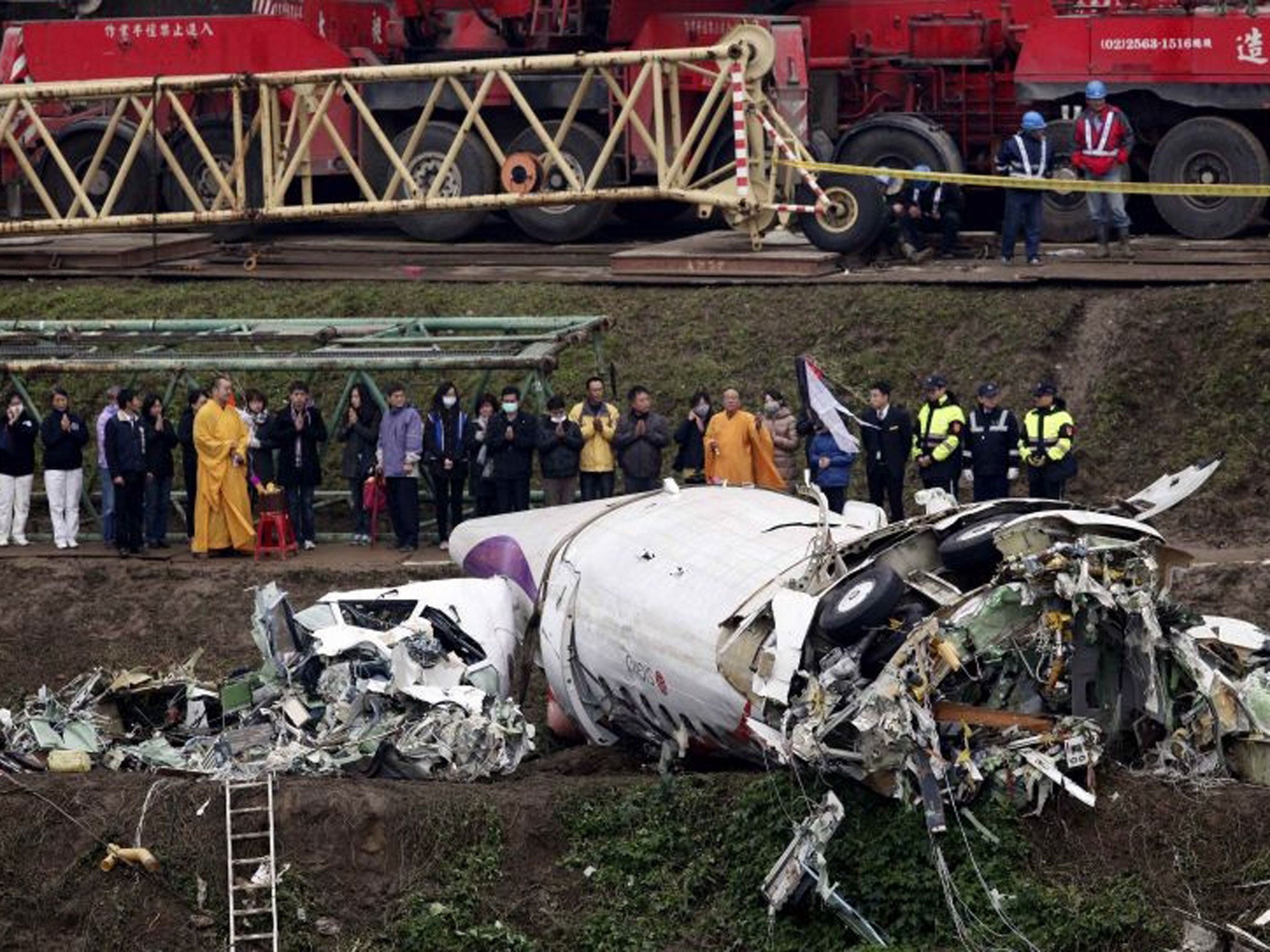TransAsia crash: One engine went idle 37 seconds into flight and pilots 'switched other off'
Investigators believed the pilots may have been trying to re-start the engines

One of the engines on TransAsia Airways Flight 235 went idle just 37 seconds after taking off, investigators have revealed.
Taiwan’s Aviation Safety Council believes the pilots may have then shut off the plane’s other engine to attempt to re-start both but did not have time before it crashed in Taipei.
The executive director, Thomas Wang, said preliminary findings from the aircraft’s black boxes showed the right engine sounded an alarm seconds after taking off, moving into idle mode.
Data showed it had not shut down, or “flamed out” as the pilot told the control tower in his last “mayday” distress call, but went idle with no change in the oil pressure.
Then, 46 seconds later, the left engine was shut down, apparently by one of the pilots, who then attempted a full re-start. The plane crashed into the Keelung River just 72 seconds later.
Eight people are still missing after Wednesday’s crash, which killed at least 35 people on board. Fifteen passengers survived.
The pilots are being hailed as heroes after dramatic footage of the plane’s final moments showed it banking steeply and clipping a motorway overpass in efforts to avoid buildings and people on the ground.
In pictures: TransAsia crash
Show all 10Their bodies were found in the cockpit still gripping the plane’s joystick with their legs badly broken, investigators said.
Mr Wang said it was too early to draw firm conclusions about the reasons why the engines cut out. A survivor said the plane did “not feel right” from the moment it left the ground.
“It's only the third day so we can't say too much,” he added. “We haven't ruled anything out.”
Taiwanese Vice President Wu Den-yih, mindful of the island's reputation as a tourist destination and its tense relations with China where most of the passengers were from, attended a prayer session at a Taipei funeral parlour.
Praising pilot Liao Chien-chung, he said: “When it came to when it was clear his life would end, he meticulously grasped the flight operating system and in the final moments he still wanted to control the plane to avoid harming residents in the housing communities.”
Divers from a local fire agency found one female and three male bodies in the mud at the bottom of the river metres from the crash site today. Relatives cried and prayed with Buddhist monks at the riverside as they were brought ashore.
The agency has sent 190 divers to search for the remaining eight bodies that are still missing, which may be in equally murky areas.
Taiwan's Ministry of National Defence dispatched three S-70C rescue helicopters to search along a river system that runs into the ocean off Taiwan's north-west coast.
Mr Wang said the cockpit flight recorder was still being analysed and a transcript would be provided as soon as possible.
Investigators are to issue a preliminary report on the crash within 30 days and a fuller report within four months, although the full investigation may take up to a year.
The turboprop ATR 72-600, which was almost new, was flying from Taipei's Songshan airport to the Taiwanese island of Kinmen.
Investigators said its engines had shown no problems before the flight and repeatedly stated that the plane would have been able to take off and fly even with only one engine working.
Earl Chapman, of Canada's Transportation Safety Bureau, told reporters that the plane's Pratt & Whitney engines were known for their reliability.
"This engine type has millions of flight hours behind it with a very good safety record. So it's fairly unremarkable in that respect," he added.
Additional reporting by PA
Subscribe to Independent Premium to bookmark this article
Want to bookmark your favourite articles and stories to read or reference later? Start your Independent Premium subscription today.

Join our commenting forum
Join thought-provoking conversations, follow other Independent readers and see their replies